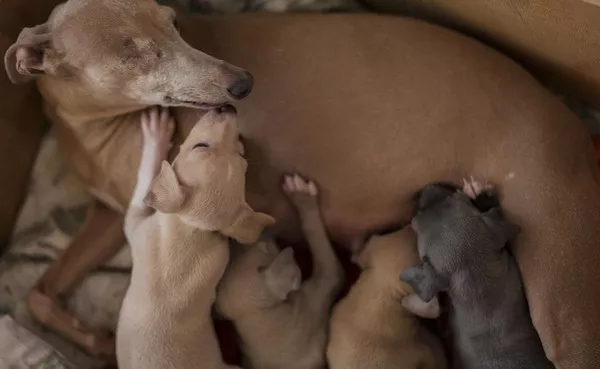Foxhounds are known for their intelligence, stamina, and strong sense of smell, which makes them excellent hunting dogs. However, like all dogs, Foxhounds can experience emotional and behavioral challenges when left alone for extended periods of time. One of the most common issues seen in many breeds, including Foxhounds, is separation anxiety.
Separation anxiety is a condition in which a dog becomes overly anxious when separated from their owner or primary caregiver. This disorder can lead to a variety of behavioral problems, including destructive behavior, vocalizations, and even health issues. Understanding whether Foxhounds are prone to separation anxiety, and how this condition manifests in them, is crucial for dog owners to provide a happy and healthy life for their pets.
In this article, we will explore the nature of separation anxiety in Foxhounds, what factors may contribute to the development of this issue, and how to address and prevent it. By the end, you will have a better understanding of the emotional needs of your Foxhound and how to create an environment that supports their well-being.
1. Understanding Foxhounds
Foxhounds, primarily known for their hunting skills, have a deep history. There are two main types of Foxhounds: the English Foxhound and the American Foxhound. Both of these breeds are intelligent, energetic, and sociable. They were originally bred to work in packs, tracking and chasing foxes across long distances. Their strong prey drive, stamina, and loyalty to their pack made them ideal for this task.
Foxhounds are highly social animals, which means they thrive when they are around people or other dogs. They are not typically the type of breed that likes to be left alone for long periods. As hunting dogs, they are accustomed to working in teams, so solitary time might feel unnatural to them, potentially leading to the onset of separation anxiety.
2. What Is Separation Anxiety in Dogs?
Separation anxiety occurs when a dog becomes overly distressed when separated from their owner. Unlike the natural and temporary discomfort dogs may experience when left alone for short periods, separation anxiety is more intense and prolonged. This condition often results in significant distress that can impact a dog’s physical and emotional health.
The signs of separation anxiety can vary depending on the severity of the condition and the dog’s individual temperament. Common symptoms of separation anxiety in dogs include:
- Excessive barking or howling when the owner leaves
- Destructive behaviors such as chewing on furniture, doors, or even trying to escape
- Urinating or defecating indoors despite being housetrained
- Pacing or restlessness when the owner prepares to leave
- Drooling or excessive salivation
- Attempts to escape from their crate or confinement area
- Depression or lack of interest in food, toys, or activities
In some cases, dogs may even display signs of physical distress, including vomiting, diarrhea, or excessive panting. If separation anxiety is left untreated, it can lead to chronic stress and a range of health problems, including weakened immune function, digestive issues, and other behavioral disorders.
3. Do Foxhounds Have Separation Anxiety?
Foxhounds are highly sociable dogs that are deeply attached to their human companions. As a result, they are susceptible to developing separation anxiety if they are left alone too frequently or for too long. While Foxhounds are not necessarily more prone to separation anxiety than other breeds, their personality and background as working dogs make them more vulnerable to the condition.
Social Nature of Foxhounds
One of the most important factors that contribute to the development of separation anxiety in Foxhounds is their social nature. Foxhounds were bred to work in teams, relying on one another for safety, guidance, and companionship. This strong desire for social interaction carries over into their domestic lives.
When a Foxhound is left alone, they may experience loneliness and confusion, which can lead to anxiety. They often prefer being around people or other dogs and may become agitated if separated from their social group. This makes it important for Foxhound owners to understand their dog’s need for companionship and attention.
Bonding with the Owner
Foxhounds can develop very strong bonds with their owners, and they may become deeply attached to them. This attachment can sometimes lead to anxiety when the owner leaves the house. While some dogs may be more independent, Foxhounds are known for their affectionate and loyal personalities. A Foxhound may follow their owner from room to room, always wanting to be in close proximity.
If a Foxhound’s owner has to leave for an extended period, the dog may experience anxiety. This is especially true if the dog is not accustomed to being alone or if they were not properly socialized as a puppy.
Energy Level and Stimulation
Foxhounds are an active breed, known for their stamina and high energy levels. If they do not get enough exercise and mental stimulation, they may become bored and frustrated when left alone. This frustration can sometimes trigger separation anxiety, as the dog’s pent-up energy manifests in destructive behaviors, such as chewing furniture or excessive barking.
Foxhounds need daily physical and mental exercise to stay content. Without proper stimulation, they may become agitated when their owners are not around, leading to the development of anxiety.
Training and Socialization
Proper training and socialization play an important role in whether a Foxhound develops separation anxiety. Dogs that are not exposed to being alone at a young age may find it difficult to cope when left by themselves later on. Similarly, Foxhounds that have not been taught to remain calm and independent may struggle more with separation.
It is also important to note that Foxhounds, like other breeds, can develop anxiety if they have experienced traumatic events. If a Foxhound was adopted from a shelter or rescue, for instance, they may have had past experiences that contribute to their anxiety. It’s important for owners of rescue Foxhounds to be extra patient as the dog may have more difficulty adjusting to new environments.
4. Factors That Contribute to Separation Anxiety in Foxhounds
Several factors can contribute to the development of separation anxiety in Foxhounds. These factors include genetics, environment, experiences, and even changes in routine.
Genetics
Genetics can play a role in whether a dog is more likely to develop separation anxiety. While Foxhounds are not known to be a breed with a high genetic predisposition for anxiety, individual dogs within the breed may be more sensitive or prone to anxiety due to their specific genetic makeup.
If a dog’s parents or littermates showed signs of anxiety, it’s possible that the dog may be more prone to experiencing similar issues. This can also be influenced by the dog’s temperament, with some Foxhounds being more naturally anxious than others.
Early Experiences
Early experiences, especially during puppyhood, can shape how a Foxhound reacts to being left alone later in life. Puppies that are not properly socialized or exposed to different situations and people may be more likely to develop anxiety when they encounter stressors such as being alone.
Additionally, puppies that experience sudden changes in their environment or are rehomed multiple times may develop anxiety as a result of uncertainty and fear. This type of trauma can increase the likelihood of separation anxiety later in life.
Change in Routine
Foxhounds are creatures of habit, and any change in their routine can cause stress and anxiety. A sudden change in their environment, such as moving to a new home, the introduction of a new pet, or the absence of a familiar person, can lead to emotional distress. This is particularly true for dogs that have developed a strong attachment to their owners.
For instance, if an owner begins to work longer hours or travels more frequently, the Foxhound may feel insecure and anxious about being left alone. Similarly, a major life change, such as a new baby in the household or a move, can disrupt the dog’s sense of stability, potentially triggering anxiety.
Lack of Exercise or Mental Stimulation
Foxhounds are a working breed with a high energy level. If they do not receive sufficient exercise, they may become bored and restless. Boredom can lead to destructive behaviors when left alone, which may be misinterpreted as separation anxiety.
Mental stimulation is also crucial for Foxhounds. These dogs are intelligent and enjoy problem-solving activities. Without proper stimulation, they may become frustrated and anxious, which can lead to the development of separation anxiety.
5. How to Prevent and Treat Separation Anxiety in Foxhounds
Separation anxiety can be managed and treated with patience, consistency, and the right approach. Here are some strategies for preventing and alleviating separation anxiety in Foxhounds:
Gradual Desensitization
One of the most effective methods for managing separation anxiety is gradual desensitization. This involves getting the dog used to being alone for short periods, gradually increasing the duration over time. The goal is to help the dog become more comfortable with being left alone and to reduce the anxiety that accompanies it.
Start by leaving your Foxhound alone for just a few minutes, then gradually increase the time. Make sure to reward calm behavior and avoid making a big deal out of leaving or returning home, as this can increase anxiety.
Provide Mental and Physical Stimulation
Ensure your Foxhound receives plenty of exercise to release excess energy before you leave. A tired Foxhound is less likely to become anxious. Additionally, provide engaging toys, puzzle feeders, or interactive games that will keep the dog mentally stimulated when left alone.
Create a Safe and Comfortable Space
Create a designated space where your Foxhound feels safe and secure when left alone. This could be a crate or a room with their bed, toys, and water. Some Foxhounds find comfort in their crate, which serves as a secure and familiar space. Make sure the space is comfortable and free from distractions.
Consider Professional Help
If your Foxhound’s separation anxiety is severe or persistent, consider consulting with a veterinarian or a professional dog trainer. A behaviorist can help you develop a personalized plan to address your dog’s anxiety. In some cases, medication may be prescribed to help alleviate anxiety symptoms.
Be Consistent and Patient
Dealing with separation anxiety can be challenging, but consistency is key. Stick to a routine and provide positive reinforcement when your Foxhound exhibits calm behavior. Be patient and understanding, as overcoming separation anxiety takes time.
Conclusion
Foxhounds, like many other breeds, are susceptible to developing separation anxiety due to their social nature, attachment to their owners, and need for mental and physical stimulation. However, with the right approach, this condition can be managed and treated. It’s essential for Foxhound owners to understand their dog’s emotional needs and provide them with the care, attention, and structure they require to feel secure.
By recognizing the signs of separation anxiety early and taking proactive steps to address the issue, you can ensure your Foxhound leads a happy and balanced life, both when you are at home and when you are away.
Related Topics:





















